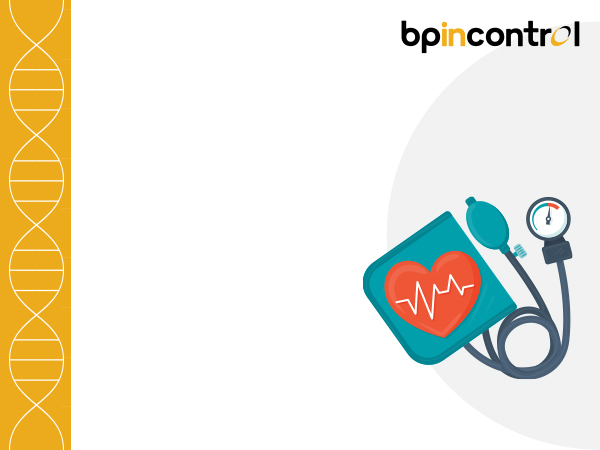What Is Idiopathic Intracranial Hypertension?

Table of Contents
Imagine waking up one morning, only to find that your head feels like it’s about to burst. You may experience throbbing headaches, vision problems, and an unrelenting pressure in your skull. This scenario might sound like the stuff of science fiction, but for some individuals, it’s a harsh reality. Welcome to the perplexing world of Idiopathic Intracranial Hypertension (IIH).
What Is Idiopathic Intracranial Hypertension?
Idiopathic Intracranial Hypertension (IIH) is an enigmatic neurological disorder characterized by abnormally high pressure within the skull, particularly within the cerebrospinal fluid (CSF) surrounding the brain and spinal cord. The term “idiopathic” denotes that ‘the cause of this condition is unknown’. While the term “Intracranial” means ‘in the skull’.
Also known as Pseudotumor Cerebri, it’s as if your brain believes it’s inside a pressure cooker, despite no apparent underlying cause. This condition primarily affects women of childbearing age, though it can occur in anyone, including children and men. While Idiopathic Intracranial Hypertension (IIH) can be debilitating, it’s not a brain tumor, and it’s essential to differentiate it from such conditions.
Intracranial Hypertension — Symptoms
Now, let’s delve into the symptoms of idiopathic intracranial hypertension that might prompt someone to seek medical attention:
-
Severe Headaches:
Unrelenting, throbbing headaches are often the first and most prominent symptom of IIH. These headaches can be enfeebling and can worsen with changes in body position, such as when you bend over or lie down.
-
Vision Disturbances:
IIH can have a profound impact on your vision. You may experience transient visual obscurations, where your vision dims or blacks out for brief moments. Other visual issues include double vision, blurred vision, and even permanent vision loss if left untreated.
-
Pulsatile Tinnitus:
Some individuals with IIH may hear a rhythmic, pulsing sound in their ears known as pulsatile tinnitus. This sound often coincides with the person’s heartbeat and can be quite distressing.
-
Nausea and Vomiting:
Due to the intense pressure within the skull, individuals with IIH can experience nausea and vomiting, similar to what’s seen in conditions like migraines.
-
Neck and Shoulder Pain:
Neck and shoulder pain can also be a symptom of IIH. This discomfort is typically a consequence of the increased intracranial pressure affecting the surrounding tissues.
-
Difficulty Concentrating:
Another obvious symptom would be cognitive impairment, such as difficulty concentrating or remembering things.
Intracranial Hypertension — Causes and Risk Factors
The exact cause of IIH remains elusive. However, there are certain risk factors and contributing factors have been identified:
Intracranial Hypertension — Causes
-
Brain Abscess:
A brain abscess is a localized collection of pus within the brain tissue. This can develop as a result of an infection, trauma, or the spread of infection from another part of the body. The presence of a brain abscess can lead to increased intracranial pressure due to the inflammation and swelling it causes.
-
Head Injury:
Traumatic head injuries, such as concussions or more severe forms of trauma, can lead to increased intracranial pressure. The brain’s response to injury often includes swelling, which can compress nearby structures and elevate pressure within the skull.
-
Stroke:
A stroke occurs when there is a disruption of blood flow to the brain, either due to a blockage (ischemic stroke) or bleeding (hemorrhagic stroke). The brain’s response to a stroke can include swelling and inflammation, contributing to increased intracranial pressure.
Intracranial Hypertension — Risk Factors
-
Obesity:
Obesity is strongly associated with IIH, and weight loss can often help alleviate symptoms.
-
Gender and Age:
As mentioned earlier, IIH is more common in women of childbearing age. While it can occur in men and children, it’s relatively rare in these groups.
-
Medications:
Some medications, such as certain antibiotics, hormonal treatments, and high doses of vitamin A, have been linked to IIH as potential triggers.
How is Idiopathic Intracranial Hypertension diagnosed?
Diagnosing Idiopathic Intracranial Hypertension is a multi-step process, which typically involves the following:
-
Physical Examination:
Your healthcare provider will conduct a thorough physical examination, which can include checking your vision, eye movements, and neurological function.
-
Vision Testing:
Visual field testing and detailed eye examinations are essential to assess the impact of IIH on your vision.
-
Lumbar Puncture (Spinal Tap):
This procedure involves measuring the pressure of the cerebrospinal fluid through a needle inserted into your lower back. Elevated pressure can be a strong indicator of IIH.
-
Imaging Studies:
MRI (Magnetic Resonance Imaging) or CT (Computed Tomography) scans of the brain can be performed to rule out other potential causes of the symptoms, such as brain tumors.
Complications for Idiopathic Intracranial Hypertension
Living with Idiopathic Intracranial Hypertension can lead to several complications, which can further impact your health and quality of life:
-
Vision Loss:
One of the most serious complications of IIH is permanent vision loss. It underscores the importance of timely diagnosis and treatment.
-
Chronic Headaches:
The chronic, severe headaches associated with IIH can be disabling and significantly affect your daily life.
-
Psychological Impact:
The relentless pain and uncertainty of IIH can lead to psychological distress, including anxiety and depression.
Idiopathic Hypertension — Treatment
The goal of Idiopathic Intracranial Hypertension treatment is to reduce the intracranial pressure and alleviate symptoms. Here’s what you can expect in terms of treatment options:
-
Maintaining your Weight:
For individuals with IIH, weight loss can be incredibly beneficial. Some may also benefit from dietary changes, such as a low-sodium diet.
-
Medications:
Diuretics, which help the body remove excess fluids, are often prescribed to reduce intracranial pressure. Additionally, some medications can be used to manage symptoms like headaches.
-
Lumbar Punctures:
In some cases, repeated lumbar punctures may be necessary to relieve pressure temporarily.
-
Surgery:
When usual treatments aren’t effective, surgical intervention can be considered. Procedures like optic nerve sheath fenestration and shunting can help lower intracranial pressure.
In a Nutshell
To sum up, Idiopathic Intracranial Hypertension is a challenging neurological condition characterized by elevated intracranial pressure. While the exact cause remains unclear, risk factors like obesity and certain medications have been identified. Early diagnosis and intervention are crucial to preventing complications like permanent vision loss.
If you suspect any symptoms of having IIH, it’s essential to seek medical attention promptly. Remember that proper medical guidance and treatment can make a significant difference in managing this condition.
And as a final note, if you are looking to learn more about similar conditions, consider visiting BPinControl’s website. Our Find a Physician portal can help you access the best doctors in your area. Additionally, you can also browse through our blogs that offer valuable information on various medical topics.
Stay informed and take preventive measures for a better and safer future!
Disclaimer
The information contained in this article is to educate, spread awareness in relation to hypertension and other diseases to the public at large. The contents of this article are created and developed by BPinControl.in through its authors, which has necessary, authorisations, license, approvals, permits etc to allow usage of this articles on The Website. The views and opinions expressed in this article are views, opinions of the respective authors and are independently endorsed by doctors. Although great care has been taken in compiling and checking the information in this article, The Website shall not be responsible, or in any way liable for any errors, omissions or inaccuracies in this article whether arising from negligence or otherwise, or for any consequences arising therefrom. The content of this article is not a substitute for any medical advice. The Website shall not be held responsible or liable for any consequence arising out of reliance on the information provided in the article.


Comments (0)
No comments found.Add your comment